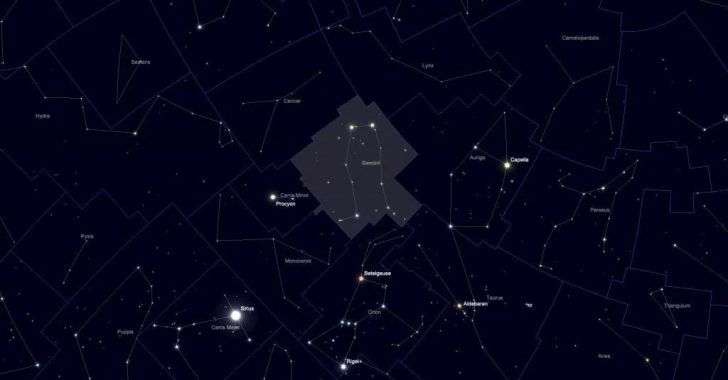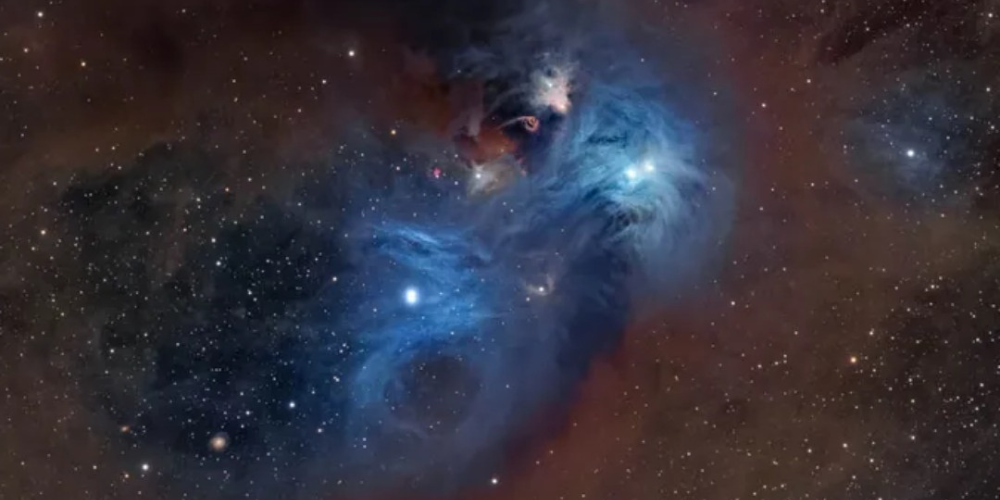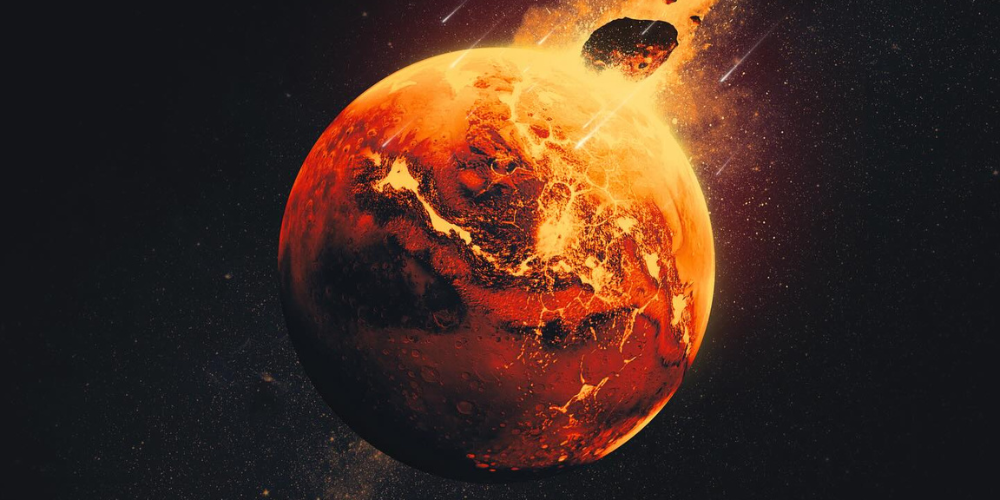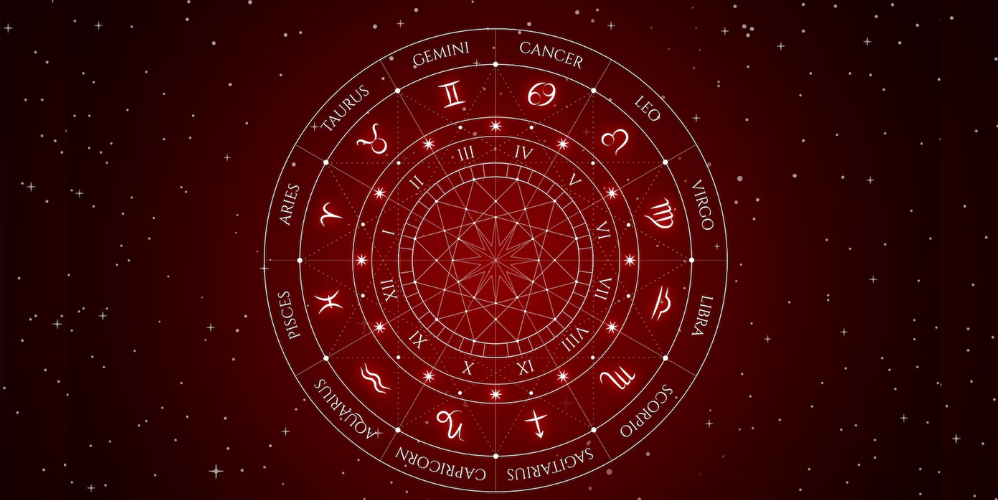There’s something magnetic about Sagittarius. This zodiac sign, active from November 22 to December 21, carries a spark that feels instantly recognizable—bold, curious, and constantly on the move. Sagittarius blends passion, intensity, and flexibility in a way that sets them apart. Their symbol, the archer, reflects a spirit that shoots toward distant horizons, eager to uncover meaning in places many people would skip. From remote rivers to historic sites filled with forgotten stories, Sagittarius pursues knowledge with an energy that rarely slows down. The Core Nature of Sagittarius Sagittarius is the final fire sign, and its traits burn with motion and curiosity. This sign is mutable, which explains its constant pull toward change and exploration. Freedom...
In his newest deep-space image, astrophotographer Greg Meyer turns the cosmos into a canvas. His subject — a nebula shaped like a furious baboon — has been dubbed the Rampaging Baboon Nebula. Streams of gas and dust weave through the frame, glowing in hues that give the scene a startling sense of movement. The photograph spotlights the complex beauty and creative chaos that define our galaxy’s stellar nurseries. A Nebula Like No Other The nebula lies about 500 light-years away in the constellation Corona Australis. Its shape suggests the face of a mandrill, with molecular dust sculpting the mouth and facial contours. The bright blue eyes are created by reflection nebulas that scatter starlight, adding a...
Mars has always been a planet of mystery, but fresh research suggests the Red Planet hides something far more unusual beneath its surface. Instead of a neatly layered interior, scientists have discovered that Mars’ mantle may be filled with giant chunks of rock left over from its violent early years. This finding reshapes the way experts view the inner structure of the planet and offers a rare glimpse into conditions dating back more than 4 billion years. Mars’ Messy Interior When most people think about the inside of a planet, the picture is often a series of tidy layers stacked one on top of another, like a clean geological cake. Mars, however, refuses to fit that...
Lightning might seem like a sudden burst from the sky, but the science behind it runs deep—and recent research has added an electrifying twist. Scientists have long known that thunderstorms build electrical charges until they discharge in brilliant flashes of lightning. What’s new is the evidence pointing to an unexpected trigger: cosmic rays. Researchers at Los Alamos National Laboratory have uncovered clues that suggest lightning may actually start with particles from outer space, opening a fresh angle on this natural phenomenon. A Shift in Understanding Thunderclouds have always been the stage for lightning. Traditional understanding says it begins when opposite charges build up in a storm—positive at the top, negative at the bottom. Once the difference...
The Vera C. Rubin Observatory has officially raised the bar for what “big data” means in astronomy. After releasing its first batch of cosmic images, the observatory isn't just capturing the night sky—it's creating one of the most extensive visual datasets humanity has ever seen. Powered by the world’s largest digital camera, the images are so detailed and expansive that processing them requires not just high-speed networks, but a whole digital ecosystem: seven international data brokers, three massive data centers, and a uniquely named management system called the Data Butler. The Scale of Rubin’s Cosmic Images What makes Rubin Observatory's contribution truly staggering is the sheer volume and precision of the data it collects. Once it...
In a groundbreaking observation, astronomers have captured an extraordinary moment in the cosmos—a high-speed, high-stakes confrontation between two galaxies over 11 billion light-years away. This isn’t just any merger. It’s a rare, aggressive event where one galaxy is striking the other with intense quasar radiation, dramatically changing its ability to form new stars. This unprecedented sighting is now offering a deeper look into how galaxies interact, evolve, and sometimes collide with devastating consequences. The "Cosmic Joust"—When Galaxies Collide Researchers used the combined power of ALMA and the Very Large Telescope (VLT) in Chile to observe two galaxies locked in what they describe as a “cosmic joust.” The term goes beyond metaphor—it reflects the actual movement. These...
Location, Facts & Myths About Gemini Constellation & Patterns
The Gemini star pattern is one of the most fascinating and recognizable sights in the night sky. Known for its twin-like stars, Castor and Pollux, this celestial marvel has captured the imagination of stargazers for centuries.
Whether you are an amateur astronomer or a casual sky-watcher, understanding where to find Gemini, its rich history, and the myths surrounding it can make your stargazing experience unforgettable.
Where Is the Gemini Star Pattern?
The Gemini star pattern dominates the northern hemisphere’s winter sky, making it a seasonal favorite. Covering 514 square degrees, it is the 30th largest constellation, sitting comfortably in the second quadrant of the Northern Hemisphere. Gemini is best seen during clear winter nights, between December and February, when it shines prominently against the cold, dark sky.

Peeps / You will find Gemini bordered by several dazzling constellations, including Auriga, Orion, and Cancer.
Spotting Gemini starts with finding Orion’s Belt – three aligned stars in a tight row. Draw an imaginary line from Rigel, Orion’s brightest star, past Betelgeuse, his fiery shoulder. Follow that trail, and soon you will meet Castor and Pollux, the unmistakable twin stars that form the heart of Gemini.
What Makes It So Unique?
The Gemini constellation is defined by its famous pair of stars: Castor and Pollux. These two giants, often referred to as the celestial twins, are bright enough to be easily visible without a telescope. But don’t let their proximity fool you. They are vastly different.
Castor is a dazzling white star system made of six stars, while Pollux, a golden-hued giant, is slightly closer to Earth and hosts an exoplanet in its orbit.
However, what sets the Gemini star pattern apart is its mythology and scientific intrigue. From its role in ancient Greek stories to its use as a celestial marker for winter navigation, Gemini has been celebrated for millennia.
The Mythology Behind Gemini
The mythology of the Gemini star pattern traces back to ancient Greece, where it symbolized the twin brothers Castor and Pollux. In legend, Castor was mortal while Pollux was immortal, a gift from their father Zeus. When Castor died, Pollux begged Zeus to reunite them, and the god placed the twins in the sky as a constellation, forever side by side.

Telly / Even today, the mythology of Gemini inspires artists and storytellers, keeping the twin stars alive in our imagination.
This story of eternal brotherhood gave Gemini its association with duality and connection. Across cultures, from Roman to Babylonian, the constellation was often linked to themes of unity and partnership.
Some Fun Facts About the Gemini Star Pattern
One of the coolest things about Gemini is its rich collection of deep-sky objects. Within its bounds lie star clusters, nebulae, and galaxies that make it a treasure trove for astronomers. The Messier 35 star cluster, for example, is a dazzling array of young stars visible even through small telescopes.
You bet! It is a must-see if you are exploring Gemini with a good pair of binoculars.
Plus, the Gemini constellation is home to the famous Geminid meteor shower, which lights up December skies every year. This meteor shower, caused by debris from the asteroid 3200 Phaethon, creates bright, fast-moving streaks across the heavens. Watching the Geminids under the backdrop of the Gemini constellation is an experience you won’t forget.
Some Myths About the Gemini Star Pattern
While the Gemini star pattern is steeped in mythology, some common misconceptions still float around. One myth is that the twins, Castor and Pollux, are identical stars. In reality, they couldn’t be more different. Pollux is a cooler, orange-hued giant, while Castor is a hot, multi-star system with a brilliant white glow.
Another myth is that Gemini is only visible in winter. It is true that winter provides the best views. You can still spot Gemini in the early spring during its gradual descent below the horizon.













